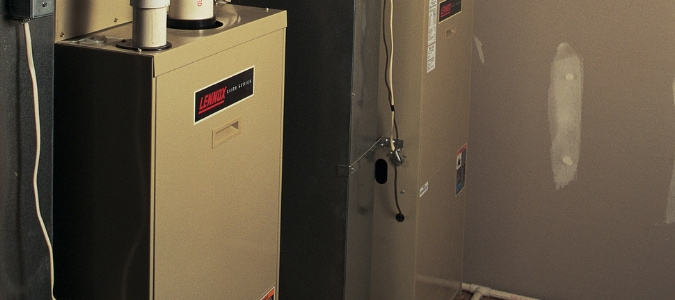Furnaces make cold weather bearable. The last thing you want to see during the cold months is a blinking light on your furnace. That means there’s something wrong happening with it, and your home might soon lose all its warmth and coziness. A blinking furnace light can indicate various problems, so it can be hard to pinpoint the cause.
To help you, here are the top possible reasons your furnace light is blinking and how you can troubleshoot each issue. If all else fails, let HVAC professionals take over. They have the knowledge, tools and experience to fix your furnace and make your home comfortable again.
How to Troubleshoot a Blinking Furnace Light
Furnaces communicate with us by blinking their light when there’s an issue. Every code has a different meaning, so try to catch it and jot it down. You can refer to your furnace’s manual to help you decode it. Here are the usual reasons behind a blinking furnace light.
Flame Failure
Flame failure happens when there’s insufficient air to keep the flame going. Many things can restrict airflow, including a clogged air filter, excess pressure in the combustion chamber and a broken burner. Start by ensuring the filter and other parts are clean. In addition, check that there are no blockages in the tank or burner chamber.
Ignition Failure
If your furnace still kicks on, check your gas burner for broken parts. If some aren’t working or you notice your furnace won’t ignite, a professional might need to fix or replace the igniter. The igniter is a switch that creates a spark to ignite each flame. But if there aren’t any flames, you might be dealing with a furnace lockout. Both situations require the attention of an HVAC professional.
Furnace Lockout
Modern furnaces come with various safety sensors. The controller constantly checks these sensors and will turn off the power and fuel if there’s anything dangerous going on. That will prevent the furnace from igniting and will cause what’s called a lockout. Your furnace will stay in this mode until an HVAC specialist manually resets it.
Pressure Switch Issue
The heat exchanger and inducer ensure the furnace system vents harmful gases. If these components fail to do their job, the pressure switch will shut the furnace down and cause the light to blink. First, check if the exhaust or chimney is blocked. If there are no obstructions, look for clogs in the condensate drain and other vent blockages before calling in an HVAC professional.
Roll-Out Switch Issue
A furnace system has several roll-out switches. These are safety devices that detect heat in areas that aren’t supposed to get hot. This issue is usually the effect of a dirty or clogged air filter. Try cleaning or replacing it to see if that fixes the problem. If not, let an HVAC professional take care of it.
Thermostat Issue
A blinking furnace light could mean the thermostat can’t send signals to the furnace. There might be a loose wire. Contact an HVAC pro to test your connections and ensure they’re tight. If nothing is amiss, it might be time to replace your thermostat. Installing a thermostat is beyond the DIY skills of homeowners. Get the help of an HVAC specialist for this task.
It’s important for homeowners to know that some systems have a heartbeat that causes the LED lights to blink on regular intervals. Some furnaces and systems have what is referred to as a heartbeat light, which is a communication confirmation for the different components. A blinking light is not always an indication of a problem. However, it can mean that there is an underlying issue. The best solution is to contact an HVAC specialist. They will assess the situation and provide an effective solution.
How to Fix a Condensation Leak in a Furnace
Is your furnace leaking? It may seem like an odd scenario, but it happens. And when it does, it’s important to address it before it snowballs into a bigger problem. Water condensation is the usual culprit behind furnace leaks, particularly in high-efficiency models.
That’s because furnaces have secondary heat exchangers that extract more available heat. That gives combustion gases more time to cool before the system vents them. They create condensation as they cool, which should drain through the drain line and floor drain. But if these components are clogged or damaged, the water condensation will leak from the furnace instead and often looks like a puddle on the floor. Furnace leaks often happen in the colder months.
Furnace leaks are difficult for homeowners to resolve. Determining the cause is not easy, and the solution is often complex. Leave the repairs and replacements to experienced HVAC professionals. Here are some of the steps they might take to fix the leak.
High-Efficiency Furnace Leak
If you have a high-efficiency furnace, the first step is to inspect the drain line and floor drain and remove blockages. That way, condensation can drain efficiently away from your home. If these components are clog-free, the condensate pump might be causing the leak. It works by forcing the condensation out of the furnace and into the pipe. An old condensate pump can’t perform at the required level. If yours is older than five years, the HVAC professional will replace it with a new one.
Conventional Furnace Leak
As for standard furnace leaks, the usual culprit is a malfunctioning humidifier. HVAC specialists will inspect the built-in humidifier’s water lines for any cracks or holes that may be causing the leak. They will also check for ill-fitting lines where water may escape from and replace parts if necessary. If there are no problems with the humidifier, they will move on to the exhaust pipe and check if it’s loose or damaged, causing the unit to leak. Only professionals can perform exhaust pipe replacements because this component can get very hot.
AC Drain Line Leak
If puddles form under the furnace only when the AC is on, it’s likely an AC problem instead of a furnace leak. The AC doesn’t just cool the air in your home. It also dehumidifies the air, meaning it collects the excess moisture in your surroundings. That water exits your home through the condensate drain line. But if it’s clogged, the water will have nowhere to go but to leak on the floor. The AC drain line is usually near or above the furnace, so it’s easy to mistake AC leaks for furnace leaks.
Furnace leaks happen more often than homeowners think. Fortunately, HVAC specialists know how to deal with this issue. They can also perform regular maintenance checks on your furnace to prevent future leaks and other problems.
Furnace Smells Like Sewer? Here Are the Possible Causes
The only thing a furnace should be doing is warming your home. It’s never normal for a furnace to emit strange smells.
If your furnace smells like a sewer or rotten eggs, turn it off immediately because that’s a sign of a gas leak. High-efficiency units have a secondary heat exchanger. If this component malfunctions, it can push dangerous amounts of carbon monoxide into your living space.
A sour smell can indicate a problem with the combustion fan. This component requires proper lubrication to remove exhaust effectively. Other possible but less likely causes are dead animals in the air ducts and sewer leaks.
If the unpleasant smell doesn’t pass immediately, get HVAC professionals to come to your house.
Here are other furnace odors to be wary of:
Musty Odor
If your furnace produces a musty smell continuously or in bursts, there’s a good chance you have mold or mildew in the AC coil or ductwork. An HVAC specialist knows how furnaces work and can inspect and clean these parts for you.
Burning Smell
When you turn on your furnace for the first time in the winter, you might notice a burning smell coming from the unit’s vent. That’s nothing to worry about because it’s likely just the dust and debris that gathered in the furnace during the summer. As the unit warms up, it burns off the particles causing that odor. It should disappear in an hour or two.
But if the smell persists, the blower motor might be overheating. Be extra careful if it’s a burning plastic or chemical smell. Turn the furnace off immediately because it could mean wires and other electrical components are burning inside. Furnaces have safety devices that trip when they sense the unit overheats, but these components can malfunction.
Contact an HVAC specialist if you notice any of these smells. A professional can assess the situation and fix any issues they notice.
Contact the Professionals for Your Furnace Troubles
Furnaces aren’t like the other appliances in your home. They are more complex and can develop issues beyond homeowners’ DIY skills. Let the professionals take over if your unit has a perpetually blinking light or is giving off a weird smell. HVAC specialists know how to deal with various furnace issues and can return yours to its efficient state.
ABC Can Solve Your Heating And Cooling Woes
Furnaces are complex systems, and trying to work on them without special training and tools can create larger problems and can even lead to damage to your home. Instead of taking these risks, contact the professionals at ABC Home & Commercial Services. Our licensed specialists are available all day and all night to handle any HVAC repairs or issue you may be having, such as hearing your furnace making noises.



